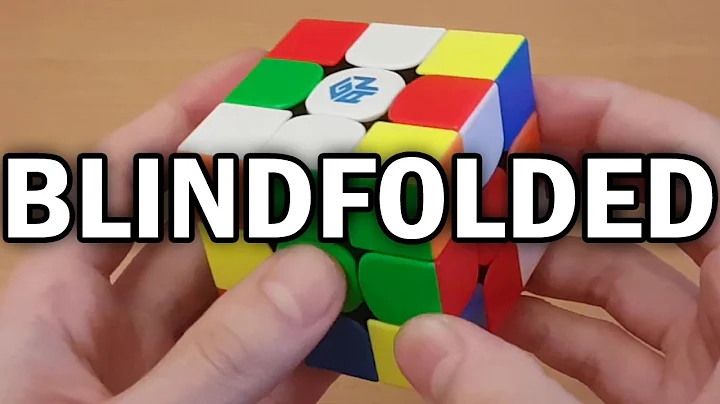Solving the Rubik’s Cube blindfolded using the Pochmann method involves memorizing the cube’s state, performing a sequence of moves while blindfolded, and then executing the reverse sequence of moves to solve the cube. This method is named after Stefan Pochmann, who popularized it. Here’s a step-by-step tutorial on how to solve the Rubik’s Cube blindfolded using the Pochmann method:
Step 1: Memorization
- Understand the Notation: Familiarize yourself with Rubik’s Cube notation (F, B, U, D, L, R) which represents the face rotations (Front, Back, Up, Down, Left, Right). Movements can be clockwise (e.g., F) or counterclockwise (e.g., F’).
- Learn Lettering Scheme: Assign a letter to each sticker position on the cube. For example:
- A = Front-Top-Left corner
- B = Front-Top-Right corner
- C = Front-Bottom-Left corner
- D = Front-Bottom-Right corner
- E = Back-Top-Left corner
- F = Back-Top-Right corner
- G = Back-Bottom-Left corner
- H = Back-Bottom-Right corner Similarly, assign letters to the edge pieces.
- Memorize the Cube’s State: Study the cube’s current state and memorize it using a specific lettering scheme. For each piece (corner or edge), note down its current position and orientation. Memorize the sequence of letters corresponding to the cube’s layout.
Step 2: Execution
- Blindfold Yourself: Put on your blindfold or close your eyes to begin the solving process.
- Solve Corners First:
- Execute a specific sequence of moves to solve the corners without disturbing the edges.
- Use algorithms to move each corner piece to its correct position and orientation based on your memorized letter sequence.
- Solve Edges Next:
- Now, solve the edges without affecting the corners.
- Apply algorithms to position and orient each edge piece correctly.
Step 3: Reconstruction
- Remove Blindfold: Once you believe the cube is solved, remove your blindfold or open your eyes.
- Perform Reverse Moves: Recreate the series of moves in reverse order to restore the cube to its original solved state.
Tips:
- Practice Algorithms: Master the algorithms required to solve corners and edges independently.
- Break it Down: Start with smaller parts of the cube (e.g., practice solving just corners first, then edges) before attempting a full blindfolded solve.
- Use a Lettering Scheme: Develop a consistent lettering system to aid in memorization and execution.
- Be Patient: Blindfolded solving requires practice and patience. Start with simpler methods before progressing to more complex techniques like Pochmann’s method.
Resources:
- Tutorial Videos: Watch detailed tutorials and walkthroughs of blindfolded solving using the Pochmann method on platforms like YouTube.
- Algorithms: Refer to algorithm sheets and online resources that provide step-by-step instructions for blindfolded solving techniques.
By following these steps and practicing regularly, you can improve your skills in solving the Rubik’s Cube blindfolded using the Pochmann method.
